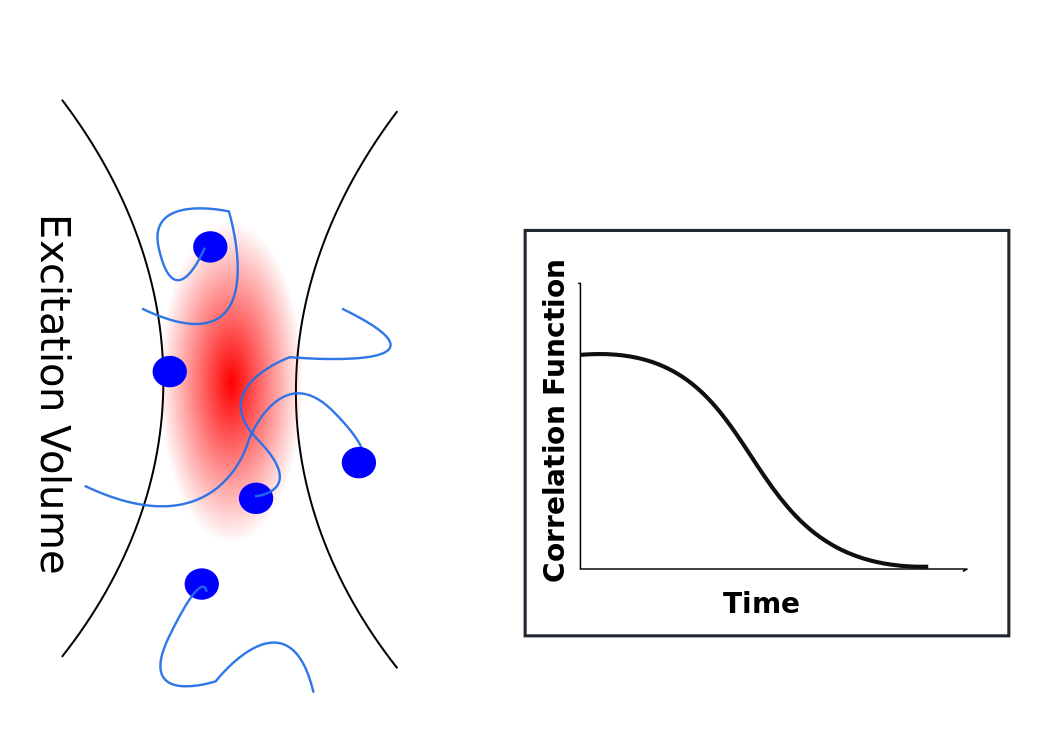Fluorescence Correlation Spectoscopy

Fluorescence Correlation Spectroscopy (FCS) is a fluorescence technique based on confocal microscopy, which revolves on examining the fluorescence signal recorded for mobile fluorescently labelled molecules. As these molecules pass through the detection area they cause temporal fluctuations in the fluorescence signal. The signal is then correlated to obtain physical parameters such as mobility and concentration.
Left: Molecules diffusing through the excitation volume. Right: Typical shape of the autocorrelation function of the recorded fluorescence signal. The molecule concentration is inversely proportional to the amplitude of the curve, while their diffusion coefficient is inversely proportional to the characteristic decay time.
Resources
-
Fluorescence correlation spectroscopy: An introduction to its concepts and applications. Biophysics Textbook Online. Schwille, P. and Haustein, E.
A great introduction to fluorescence correlation spectroscopy.
Fluorescence correlation spectroscopy: The technique and its applications. Reports on Progress in Physics 65: 251-297 (2002). Krichevsky, O. and Bonnet, G.A comprehensive review of fluorescence correlation spectroscopy techniques both from a practical and theoretical perspective. Reviewed are experimental design and setup, applications in analytical chemistry, cell biology, and physics, as well as estensions of the technique involving laser scanning.
Stowers Microscopy Center online FCS resource.An excellent website explaining some of the more theoretical and technical aspects of FCS.
Laboratory for Fluorescence Dynamics Fluorescence workshop.A link to a series of lecture covering a range of topics related to FCS, from the very basic to the very advanced.
